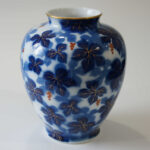Ceramics & Tableware
Ceramics of Japan had a rich history of pottery since the Jomon period over 10,000 years ago. Pottery made by ceramics, which allows the texture of the soil to be felt, has been continuously crafted since then, with each piece produced only in the place where its soil is sourced. Pottery made of ceramics plays a significant role in practices such as tea ceremony and flower arranging.Porcelain exudes elegance with its thin, translucent texture, often associated with luxury. Representative regions include Arita, known for Arita ware, and Kutani in Ishikawa Prefecture, renowned for its porcelain.
In Japanese pottery and ceramics, there are various designs and uses. Common uses include tableware, tea utensils, flower vases, and garden decorations. Designs often feature traditional patterns, motifs, landscapes, and plants, although contemporary designs are becoming more prevalent. Additionally, diverse expressions are created through different glazes and firing methods. Pottery and ceramics often reflect Japanese culture and aesthetics, enjoyed in everyday life as well as in art.
Japanese ceramic tableware is globally renowned for its beauty, quality, and diversity. Crafted with a combination of traditional techniques and aesthetics, Japanese tableware reflects the country’s culture, landscapes, and seasonal changes.
These tableware items are closely tied to Japan’s traditional dining culture, tea ceremonies, flower arrangements, and other rituals. Japanese ceramic tableware not only boasts aesthetic beauty and functionality but also carries cultural significance, enriching the Japanese way of life and landscapes.
Since the Jomon period over 10,000 years ago, Japan has had a rich history of pottery. Even today, pottery is actively produced in various regions across Japan. The allure of Japanese pottery lies in the beauty of its irregular forms created by hand.
結果の49~70/70を表示しています





















